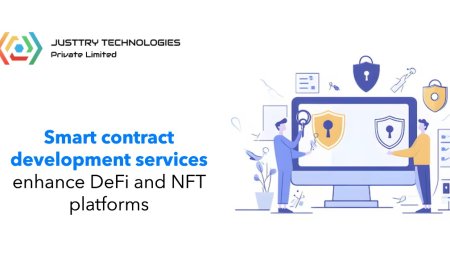How Can Internal Network Penetration Testing Prevent Cybersecurity Risks?
Our managed safety services keep your business safe with 24/7 monitoring and quick response to threats. We also perform vulnerability assessments and help with compliance. We specialize in complete cyber security services, including network security, cloud security, user training, support from our security operations center (SOC), and endpoint protection.

Your employees are inside the building. Your firewall protects the perimeter. Your antivirus runs its processes. So, you feel secure, right?
Here's the stark reality: 60% of cyberattacks come from inside your network, not from attackers breaking in, but from threats that already exist within the walls.
Most businesses spend thousands on external security while leaving their internal networks wide open. It's like having a fortress with titanium walls but no locks on the interior doors.
The Inside Job You Never Saw Coming
Internal network penetration testing brings forth this unpleasant conclusion: your biggest security risks are not, in fact, strangers trying to get in. Instead, they're the systems, users, and processes already allowed inside your network perimeter.
Think about it. An attacker coming through your firewall, through a phishing email, an infected USB drive, or an employee account, is basically a trusted insider from there. The internal systems do not query these agents. They do not ask for further authentication. They just... trust.
This is where most security strategies fail spectacularly. Companies invest heavily in perimeter defense but treat internal networks like safe zones. Spoiler alert: they're not.
The Lateral Movement Nightmare
Here's how lateral movement takes place inside your interiors, and why it's much more dreadful than one would think. Attacker need not target your CEO's laptop directly: instead, get into the intern's machine first, then make way to the HR system, then through payroll, and eventually into the crown jewels. The process is lateral movement, and lateral movement is indeed very effective.
Cybersecurity subscription services often fail to detect this vital vulnerability because they are too busy with threats from outside. So they watch the front door while attackers are inside plundering the vault.
The hidden insight is that internal networks are sometimes less secure than external ones. Companies assume that "inside equals safe" and, therefore, configure systems with excessive trust relationships and little monitoring.
The Trust Trap That Kills Security
Internal systems are built on trust. Servers trust workstations. Workstations trust users. Users trust applications. It's a web of implicit trust that attackers exploit ruthlessly.
Here's what most security teams don't realize: internal network testing reveals trust relationships that shouldn't exist. Like the printer that has admin access to the domain controller. Or the marketing computer that can access financial servers.
Subscription to cybersecurity models typically provides ongoing external monitoring but fails to continuously assess these internal trust relationships. They're static solutions for dynamic problems.
The Insider Threat Reality Check
Not all internal threats are malicious employees plotting revenge. The bigger danger is well-meaning staff making security mistakes. The accounting manager who shares passwords. The IT guy who never updates server patches. The executive who clicks every email link.
Penetration testing of internal network infrastructure exposes these human vulnerabilities alongside technical ones. It shows how normal business operations can become attack vectors.
Key insider threat scenarios that testing reveals:
-
Privileged accounts with excessive permissions
-
Unpatched internal systems hiding in plain sight
-
Shared credentials across multiple systems
-
Unsecured file shares containing sensitive data
The Compliance Trap Nobody Talks About
Most compliance frameworks stress external security controls. Some tick the "firewall" box, others lock in antivirus, yet others enforce access controls. But not many address the internal security lapses that are of paramount importance.
As you document your external security measures, the attackers are already inside the network, potentially roaming between systems. Things like compliance offer you a false sense of security while the real threats are in play, staying away from detection.
Internal network security testing brings to light the gaps between compliance requirements and real security. It reveals where the controls that you have documented actually fail when put into practice.
The Continuous Testing Revolution
Penetration testing is usually conducted yearly. It is like clocking in for your annual physical and taking your health for granted for the other 364 days. Networks keep on changing. New systems go online. Configurations start drifting. Users can obtain access of sorts.
Subscription-based cybersecurity solutions that offer Continuous internal testing provide you with great continuous visibility into your security posture, preventing problems from escalating into breaches.
Changing of the game insight: Internal network testing is not a one-off engagement but an ongoing one that keeps pace with your infrastructure.
The Cost of Ignoring Internal Security
The average data breach costs $4.45 million. Most of that damage happens after attackers get inside your network. They don't just steal data; they study your systems, escalate privileges, and establish persistent access.
External security testing tells you how hard it is to break in. Internal testing tells you how much damage attackers can do once they're inside. Learning how to perform penetration testing on external networks is just the first step; internal testing completes the security picture.
Patch Things Up Before They Fall Apart
Internal network penetration testing isn't just about finding vulnerabilities. It's about understanding how your business actually operates versus how you think it operates. It reveals the gap between security policies and security reality.
The companies that thrive don't just defend their perimeter. They assume breach and prepare for internal threat scenarios. They test their internal defenses as rigorously as their external ones.
Stop betting your business on perimeter security alone. Start testing what matters most; the networks, systems, and processes that run your business from the inside out.
Your internal network is either your strongest asset or your biggest liability. Which one is it?



































